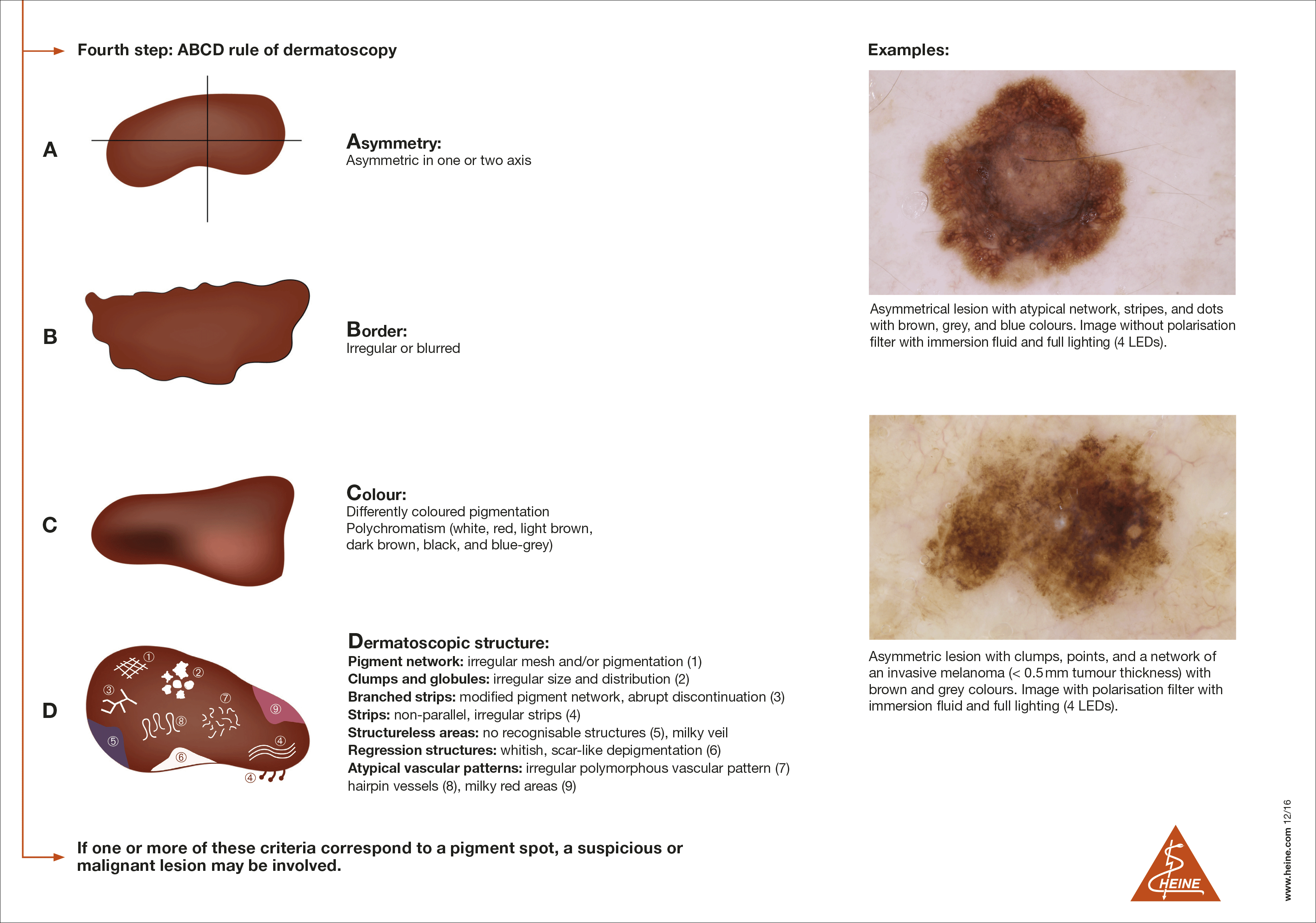Early detection ABCDE rule
Early detection
The objective of early detection (secondary prevention) is to identify and treat skin cancer at an early stage. In the early stages, skin cancer can almost always be cured with surgery.
nlike other organs, your skin is very suited to early detection of cancer, as it can be readily examined by yourself, a partner, or a specialist. On the following pages, you will read how you can effectively examine yourself and assess your skin changes, as well as when you should see a doctor.
Self-examination
You know your own skin or the skin of your partner or child better than anyone else. If you have an increased risk of skin cancer, we recommend regular and systematic self-examination. This should be done with a mirror so that you can also assess your back and buttocks as well as the soles of your feet. It is important to know that skin cancer can also occur on areas of the body that have not been exposed to the sun (e.g. the oral mucosa, a hair-covered head, the anal region, or the soles of the feet).
The following rules will help you to best assess your skin changes:
Focus your attention on anything that has appeared recently or has changed; of course, numerous benign changes (e.g. age spots and haemangioma) will occur over a lifetime. However, if a new spot has appeared or an existing mole has changed, we advise you to consult a dermatologist for further clarification. You should also focus on areas that look different from others, as these should be reported and removed where possible.
ABCDE rule:
The ABCDE rule will help you to determine whether a spot involves benign or malignant changes. The spot is evaluated according to five different criteria:
A – Asymmetry
B – Borders
C – Colour
D – Diameter
E – Evolution (new and having appeared within a short time)
Warning symptoms for lesions include asymmetric (smooth and/or irregular border), i.e. partially smooth and partially fringed in the outer periphery, and/or the existence of different shades, e.g. reddish, blackish, and brownish shades. Furthermore, lesions with a diameter of more than 5 mm are more vulnerable.
Many benign changes also meet these criteria. Do not panic: simply show your dermatologist the suspicious skin change.
Skin cancer screening using dermatoscopy
Dermatoscopy has become an indispensable component of diagnostics for dermatologists and general practitioners. The dermatoscope is also useful for assessing other skin diseases.
Dermatoscopy is a non-invasive, simple method that enables the examination of skin lesions. The lesion is observed through a microscope with the addition of fluid and light. Using various algorithms (dermatoscopic ABCD rule, the Menzies’ score, seven-point list, Chaos & Clues), a trained examiner can make a reliable diagnosis: a benign or malignant skin tumour.
See the following for an example of a structured approach for dermatoscopic examination using the ABCD rule. Other examples are "Other algorithms of melanocytic lesions - von Hon Assoc Prof Amanda Oakley" and "Chaos & Clues (an Australian method)".
